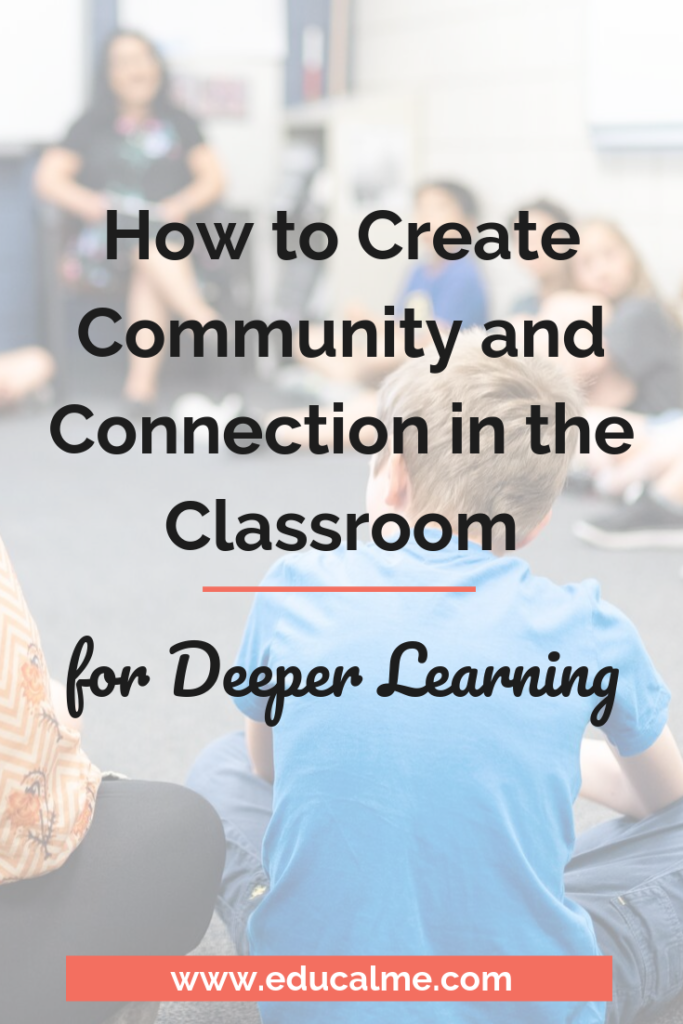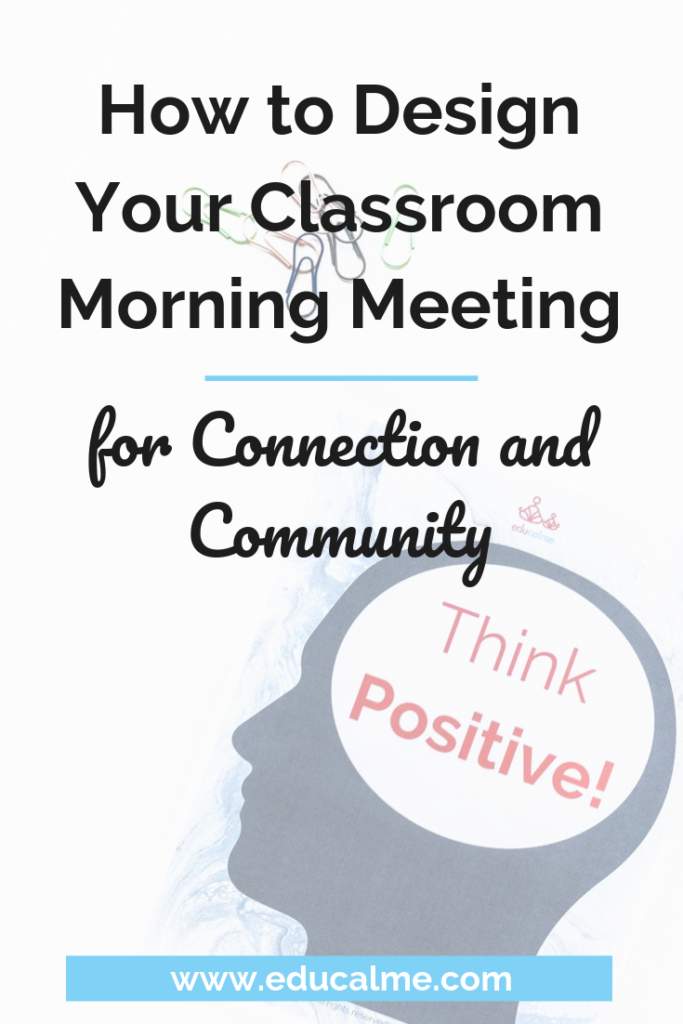
We find the most efficient way to make them feel this way is to create connection, relationship and community by having a daily morning meeting with our students!
A simple and effective classroom routine.
We noticed that as the school year goes on, students become more and more willing to share on deeper topics, talk about feelings and emotions and they develop compassion for themselves and the others in the classroom.
Here is our process for morning meeting:
If you want to try this in your classroom, be sure to join our Educalme Free Trial where you will have enough five minute guided mindfulness practices for an entire month!
Educalme Classroom is your clear roadmap & simple action plan to prioritize social-emotional development so that your students are ready for calm and focused learning.
Get a full year of ready-to-use audio, video and printable mindfulness lessons for the classroom. No prep required!
Create expectations for morning meeting and then start each morning meeting by repeating expectations. This ensures the success of morning meeting! Repetition is key!
This takes about two minutes but ensures each student has had a greeting in the morning from someone in the classroom. This helps them feel like they’re a part of the community!
The first student says hello to the person beside them, then that person says hello to the student beside them, etc. You can also make this more animated by throwing around a ball while saying hello or even having their names on popsicle sticks so they can pick names and say hello!
Ask students a question like, “What did you notice during today’s practice?” (referring to the mindfulness practice), or “How are you feeling today?”, etc.
Don’t force each student to share as this may make certain students feel like they’re not safe, seen or heard. What we like to do is to have a talking stick or rock and students can share once they have it, and if they don’t want to share, they can simply pass it along to the next person. This still gives them a little moment in time where they can feel special, whether they choose to share or not!
Morning meeting isn’t only for building trust and community, it can also be a great opportunity to get some teaching and learning in. For example, when we taught grade 5, we would play games around memorizing base multiplication or play a game where they need to use their oral French and/or English language arts.
Whether daily or weekly, students have to know it’s coming and look forward to it. We can’t stop building those relationships just because it’s report card season! Get creative, shorten it if absolutely necessary, but make it a class habit.
To go even deeper on this topic, listen to our episode on The Balanced Educator Podcast below.
Be sure to subscribe to the Balanced Educator Podcast so you don’t miss our upcoming episodes as we continue to teach how to avoid teacher burnout. iTunes, Spotify, Google Play
Share this post on Pinterest so other educators can learn concrete strategies to form healthy habits this school year.

Let us know in the comments, how do you build connection and community in your classroom?
A special thanks to our sponsor:
Comments are closed.
I intended to send you a very small observation to say thanks the moment again on the awesome thoughts you’ve featured in this article. It has been so shockingly generous with you to provide publicly what many individuals would’ve sold for an electronic book to end up making some bucks for themselves, particularly considering the fact that you could have tried it if you ever desired. The thoughts likewise served to become a fantastic way to know that other people have the identical zeal the same as mine to see a good deal more when considering this condition. I’m certain there are millions of more pleasant times in the future for individuals that read through your website.
Thank you, we appreciate that so much! I hope you enjoy what we have to share!!
[…] followed by a community-building practice like a morning meeting or a sharing circle (more on that here) is the best way to support these levels of need for social-emotional learning and […]
Thank you so much!